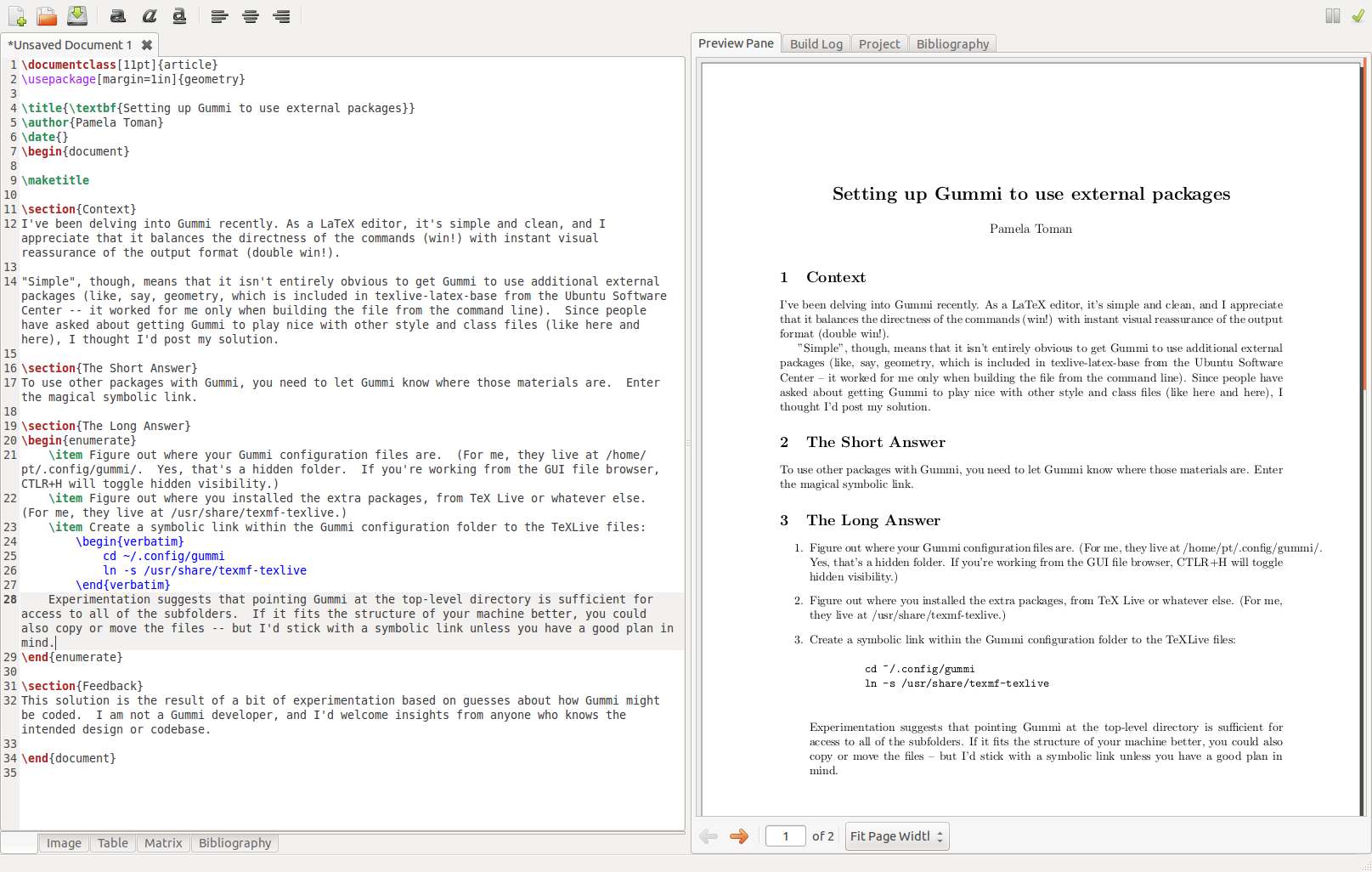I’ve been delving into Gummi recently. As a LaTeX editor, it’s simple and clean, and I appreciate that it balances the directness of the commands (win!) with instant visual reassurance of the output format (double win!).
“Simple”, though, means that it isn’t entirely obvious how to get Gummi to use additional external packages (like, say, geometry, which is included in texlive-latex-base from the Ubuntu Software Center — that package worked for me only when building the file from the command line). Since people have asked about getting Gummi to play nice with other style and class files but haven’t gotten responses (like here and here), I thought I’d post my solution.
The short answer: To use other packages with Gummi, you need to let Gummi know where those materials are. Enter the magical symbolic link.
With details:
-
Figure out where your Gummi configuration files are. (For me, they live at
/home/pt/.config/gummi/. Yes, that’s a hidden folder. If you’re working from the GUI file browser, CTRL+H will toggle hidden visibility.) -
Figure out where you installed the extra packages, from TeX Live or whatever else. (For me, they live at
/usr/share/texmf-texlive/.) -
Create a symbolic link within the Gummi configuration folder to the TeXLive files:
cd ~/.config/gummi ln -s /usr/share/texmf-texlive
Experimentation suggests that pointing Gummi at the top-level directory is sufficient for access to all of the subfolders. If it fits the structure of your machine better, you could also copy or move the files — but I’d stick with a symbolic link unless you have a good plan in mind.
–
This solution is the result of a bit of experimentation based on guesses about how Gummi might be coded. I am not a Gummi developer, and I’d welcome insights from anyone who knows the intended design or codebase.
